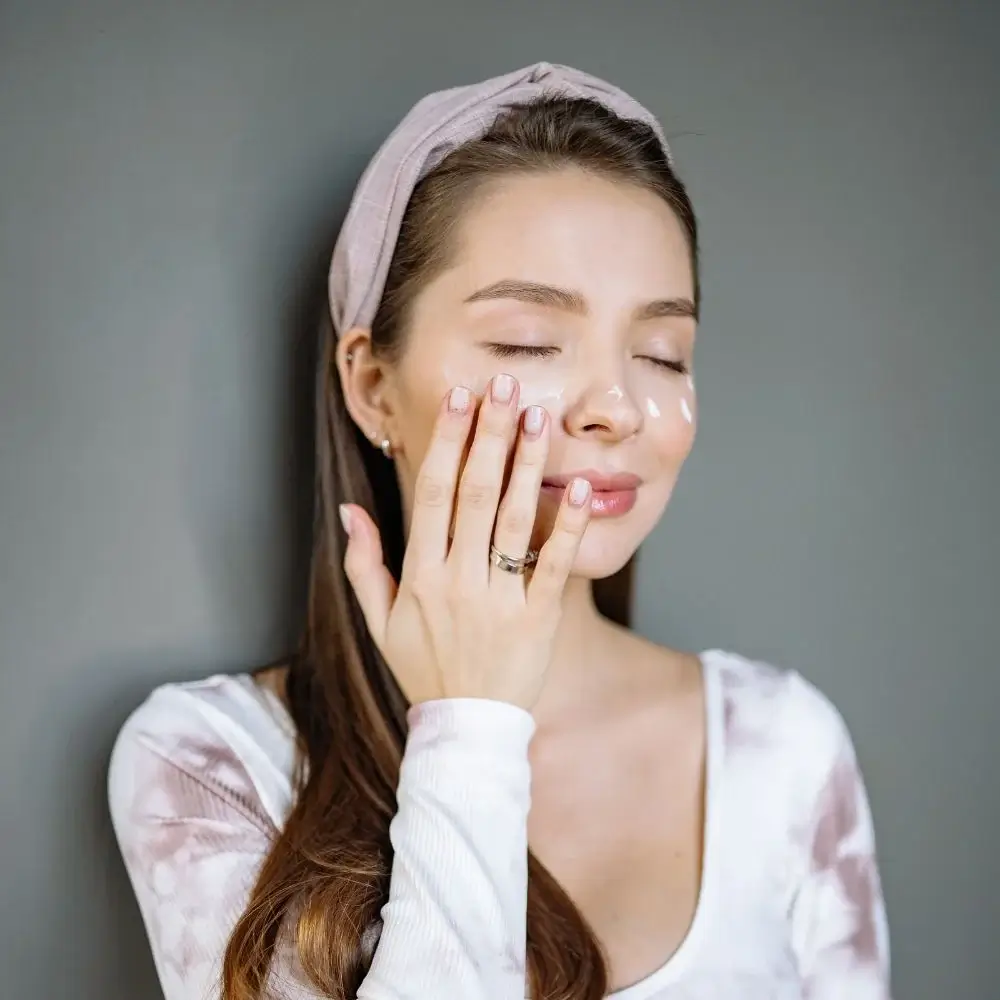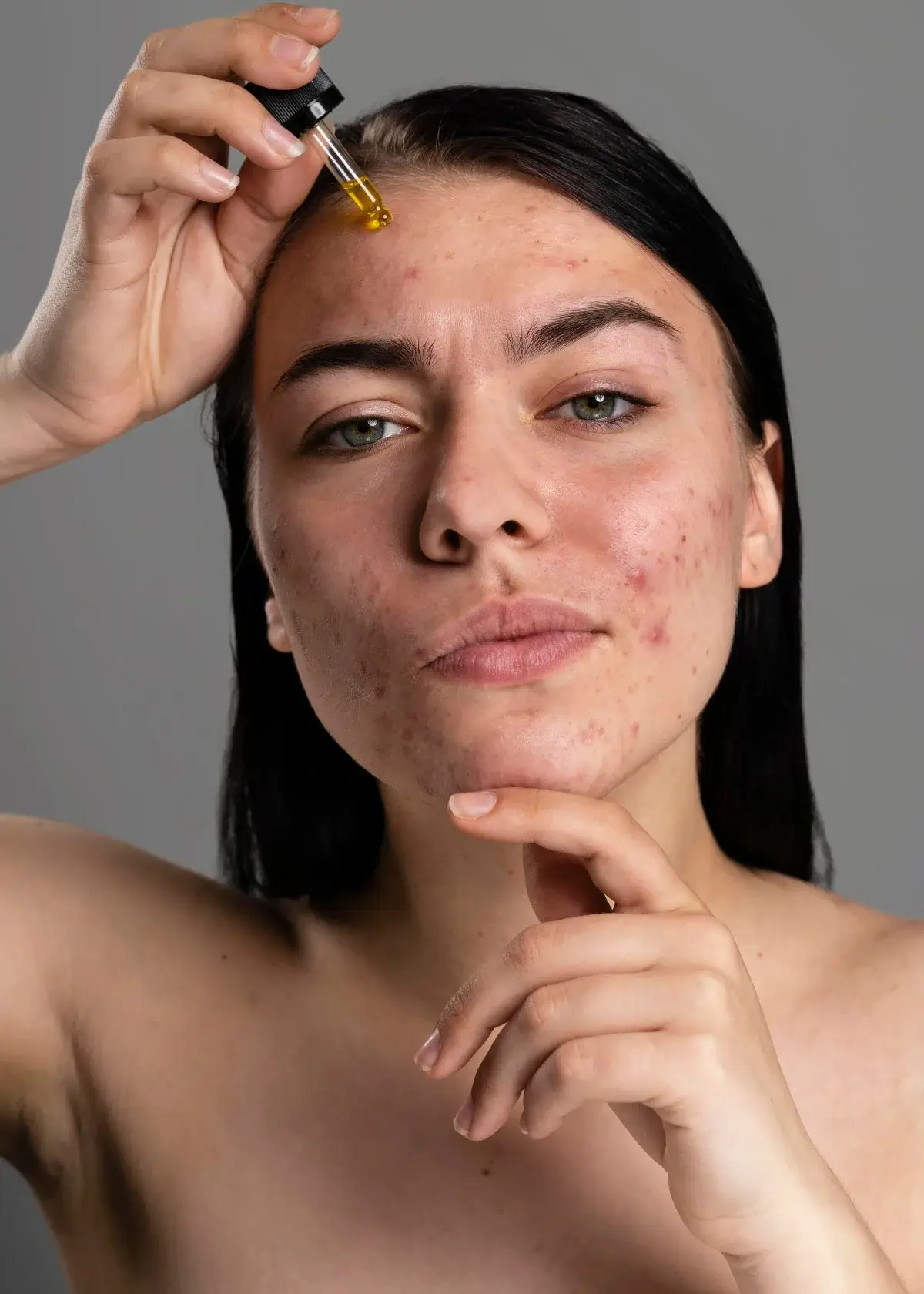As we all know, perfect makeup application begins with a good base, and primer is the key ingredient that helps create that flawless look. If you have large pores or acne scars, achieving a smooth canvas for your makeup can be tough. But, with the right primer and helpful tips, you can get your desired look. In this blog post, we’ll discuss how you can perfectly apply primer for large pores and acne scars for best results.
Step 1: Clean Your Skin
The first and most crucial step is cleaning your skin thoroughly before applying primer. This will help to remove impurities and excess oil that could interfere with the primer. It will also help the primer to adhere better to the skin. Use a gentle cleanser suitable for your skin type, and rinse your face thoroughly with lukewarm water.
Step 2: Apply Moisturizer
After cleansing, apply a moisturizer to hydrate your skin. This will make your skin smoother and softer, which will help the primer to glide on evenly. Choose a lightweight and non-greasy moisturizer so it doesn’t clog your pores. Avoid applying too much moisturizer, as it may inhibit the primer’s ability to stick to the skin.
Step 3: Apply Primer
Once your skin is clean and moisturized, it’s time to apply primer. Choose a primer that is specifically designed for large pores and acne scars. Apply the primer using a small brush or fingertips, starting from the center of your face and working outward. Be sure to apply it evenly and in a thin layer. Allow the primer to dry completely before applying your makeup.
Step 4: Apply Foundation
After the primer has dried completely, it’s time to apply your foundation. Use a lightweight foundation that is suitable for your skin type. If you have large pores or acne scars, use a foundation designed to cover them up. Use a brush or a sponge to apply the foundation from the center of your face and blend it outward. Be sure to blend the foundation well with no visible lines or patches.
Step 5: Set Your Makeup
The last step is to set your makeup with a powder that matches your skin tone. This will help to prevent your makeup from smudging or melting throughout the day. Choose a lightweight powder and finely milled so it doesn’t settle into the pores or accentuate the acne scars. Apply the powder using a large brush and use circular motions to blend it well.
Applying primer for large pores and acne scars requires a few extra steps, but achieving a smoother and more even makeup application is worth it. Remember to clean your skin, apply moisturizer, use a primer designed for large pores and acne scars, apply foundation evenly, and set your makeup with a matching powder. These tips give you the flawless makeup look you’ve always wanted.
Primer is a crucial step in any makeup routine, but finding the right one can be challenging, especially if you're dealing with facial imperfections like large pores or acne scars. Thankfully, your search is now over. We've researched and found the best primer for large pores and acne scars on the market. You'll be on your way to flawless-looking skin with a quick click of the link. This holy grail product will fill in any unwanted texture, blur your pores to perfection, and create a smooth canvas for your makeup. Get ready to fall in love with your new favorite beauty essential.
What role does hydration play in the effectiveness of primers for these skin concerns?
Hydration is a foundational aspect of the effectiveness of primers for addressing skin concerns. Well-hydrated skin provides an optimal canvas for primer application. The primer adheres more smoothly when adequately hydrated skin, filling in pores and scars with greater efficacy. Moreover, proper hydration prevents the primer from accentuating dry patches or uneven texture, ensuring a seamless and flawless finish. By prioritizing hydration through a consistent skincare routine, you enhance the overall performance of primers, allowing them to work synergistically with your skin to camouflage imperfections and create a smoother complexion.

What is the order of applying primer concerning other skincare and makeup products?
The proper sequence of applying primer to other skincare and makeup products is crucial for achieving the desired results. Begin by cleansing your skin to remove any impurities. Follow this with your regular skincare routine, including serum, moisturizer, and sunscreen. These products create a nourishing and protective base for your skin. Once your skincare has been absorbed, apply the primer before your foundation or other makeup products. This strategic order ensures that the primer acts as a barrier between your skin and makeup, allowing for smoother application, improved adherence, and extended wear time.

What are natural or organic primer options for sensitive skin and acne scars?
Individuals with sensitive skin and acne scars can benefit from opting for natural or organic primer options that prioritize skin health. Brands like RMS Beauty offer products like the "Un" Cover-Up Cream Foundation, which uses organic ingredients to provide coverage while nourishing the skin. These formulations often avoid harsh chemicals and synthetic additives that aggravate sensitive skin or exacerbate acne scars. By choosing natural or organic primers, you can address your skin concerns with gentle, soothing products that are less likely to trigger adverse reactions, allowing you to achieve a more even complexion without compromising your skin's well-being.

How can I use a color-correcting primer to even out the skin tone over acne scars?
Utilizing a color-correcting primer to address acne scars involves a strategic approach to achieving an even skin tone. For red or inflamed acne scars, opt for a green-tinted color corrector. After completing your skincare routine, apply a small amount of the green-tinted primer directly onto the scarred area. Gently blend the primer using your fingertips or a makeup sponge until it's seamlessly integrated. Follow up with your regular foundation or concealer routine. The green tint counteracts the redness, creating a neutral base that helps camouflage the scar's appearance, resulting in a more balanced and uniform complexion.

How do I properly cleanse my skin to remove a primer at the end of the day?
Effectively removing primer at the end of the day requires a thorough cleansing routine to ensure the skin is free from makeup and product residue. Begin with an oil-based cleanser, which effectively breaks down makeup and primer. Gently massage the oil cleanser onto dry skin, allowing the makeup to dissolve. Follow this with a water-based cleanser to remove the oil and remaining impurities. This two-step cleansing removes the primer from the skin's surface, preventing clogged pores and potential breakouts.
Should I be cautious about layering multiple skincare products with priming properties?
Layering multiple skincare products with priming properties requires careful consideration to avoid overwhelming the skin and compromising the effectiveness of each product. While it might be tempting to use several priming products to address multiple concerns, it's advisable to prioritize quality over quantity. Instead of layering numerous products, choose one primer that explicitly addresses your primary skin concern, whether pore minimization or scar coverage. This focused approach ensures that the chosen primer can work optimally to create a smooth canvas for makeup application.







